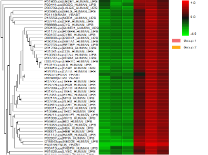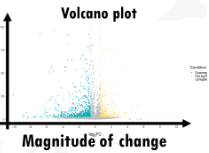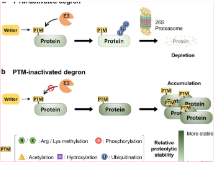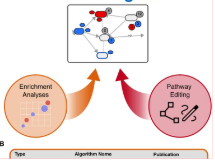Explore how post-translational modifications regulate protein function and cellular processes using advanced analysis techniques.

Post-translational modifications (PTMs) are essential in regulating protein function, allowing cells to adapt swiftly to environmental changes. At Vitalytics BioSciences, our Post-Translational Modification Analysis services provide researchers with powerful tools to understand these critical regulatory mechanisms.
Identify PTMs that correlate with disease states, providing potential biomarkers for diagnostics and prognostics.
Explore how altered PTMs drive disease processes such as cancer, neurodegeneration, and metabolic disorders.
Identify druggable targets related to specific PTMs, supporting the development of targeted therapeutics.
Investigate how modifications like phosphorylation regulate signaling pathways and cellular responses.
Understand the role of modifications in modulating protein-protein interactions, enzymatic activity, and functional dynamics within cells.
Identify and quantify key phosphorylation sites crucial for signal transduction and cellular regulation.
Investigate protein degradation and turnover mechanisms, providing insights into the regulation of protein stability.
Examine acetylation and methylation modifications that play critical roles in gene expression regulation and chromatin remodeling.
Characterize glycosylation patterns that influence protein stability, trafficking, and cell-cell interactions.
Capture a wide range of modifications to provide a holistic view of PTM patterns across samples, enabling complex studies.
State-of-the-art mass spectrometry for the accurate identification and quantification of PTMs.
Robust capabilities to accurately identify and characterize a wide range of post-translational modifications, including phosphorylation, ubiquitination, acetylation, methylation, and glycosylation.
Advanced mass spectrometry techniques, such as Data-Independent Acquisition (DIA) and phosphoproteomics, enable precise quantification of PTM levels across samples.
Analyze how PTMs regulate protein activity, localization, interactions, and stability to uncover their role in modulating cellular processes and disease mechanisms.
Identify PTM signatures that correlate with disease states, providing potential biomarkers for diagnostics, prognostics, and personalized medicine.
Discover druggable targets related to specific PTMs, supporting the development of targeted therapeutics for various diseases.
Capture a holistic view of PTM patterns across samples, enabling in-depth understanding of complex regulatory networks within cells.
Integrate PTM data with biological pathways to elucidate the functional impact of modifications on cellular processes and signaling cascades.
Generate publication-ready visualizations and comprehensive reports to effectively communicate PTM analysis findings.
Map identified PTMs to known biological pathways and signaling cascades to understand their functional roles and regulatory mechanisms.
Construct protein-protein interaction networks to visualize how PTMs influence the interactions and dynamics within cellular processes.
Perform functional enrichment analysis to identify biological processes, molecular functions, and cellular components that are significantly associated with the observed PTM patterns.
Integrate PTM data with other omics datasets, such as transcriptomics and proteomics, to gain a comprehensive understanding of the multi-layered regulation of cellular systems.
Develop computational models to simulate the dynamic effects of PTMs on protein function and cellular signaling, enabling predictive insights and hypothesis generation.

A heatmap visualization to display the relative abundance and patterns of post-translational modifications across samples and proteins.

A volcano plot to identify statistically significant changes in post-translational modifications between experimental conditions or disease states.

A network diagram to illustrate the complex interactions and relationships between proteins and their post-translational modifications.

A visualization to depict the kinase-substrate relationships, highlighting the regulatory connections between kinases and their targets.

Connect with Vitalytics BioSciences for expert data analysis services now.
At Vitalytics BioSciences, we transform your PTM into actionable insights—illuminating the intricate regulatory landscape of your genome!
Don’t miss our future updates! Get Subscribed Today!
©2024. Vitalytics BioScience Company Pvt Ltd.